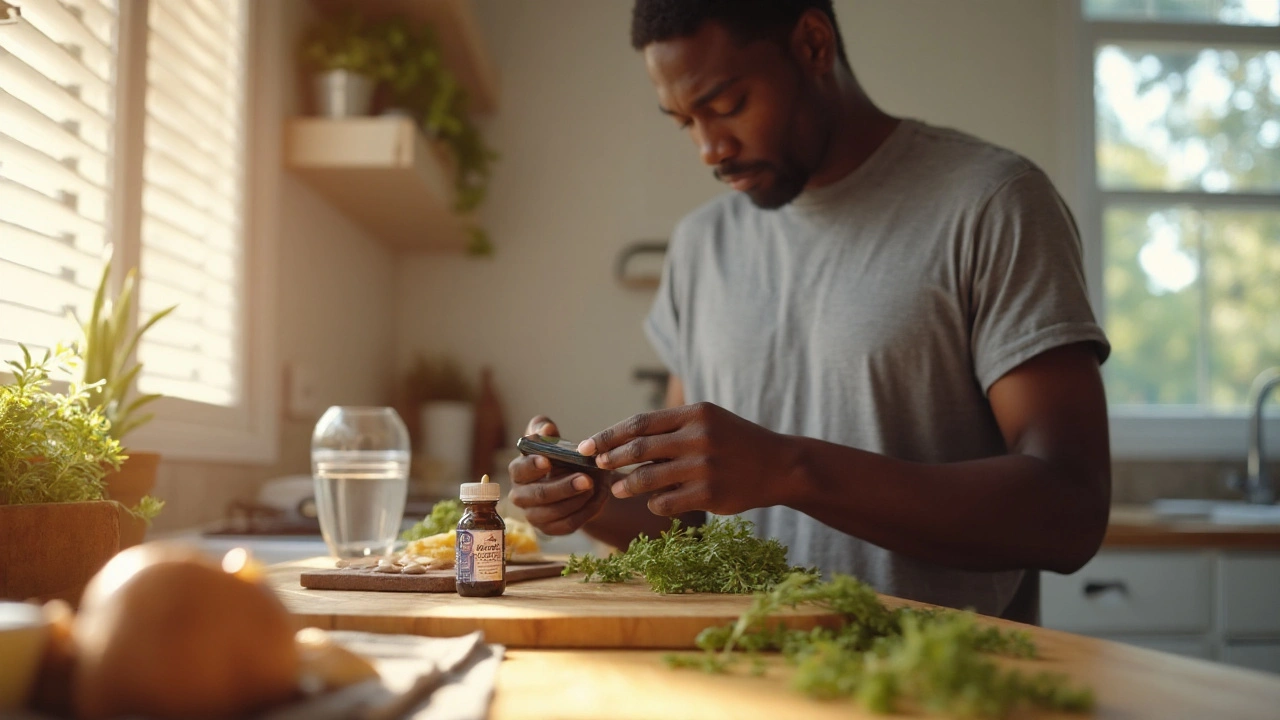Blood Sugar Support: Simple Steps for Stable Glucose
Keeping your blood sugar steady doesn’t have to be a science experiment. A few everyday choices can make a big difference, whether you have diabetes, pre‑diabetes, or just want to avoid the energy crashes that come after a sugary snack. Below are practical tips you can try right now.
Food choices that steady your sugar
First, look at what’s on your plate. Whole foods that are high in fiber—like oats, beans, broccoli, and berries—slow down how fast sugar enters your bloodstream. Swap white rice or pasta for brown rice, quinoa, or whole‑wheat versions. Those grains keep the rise in glucose more gradual.
Protein is a friend too. Adding a source of lean protein—chicken, fish, tofu, or a handful of nuts—to each meal helps slow digestion and keeps you full longer. That means you’re less likely to reach for a candy bar between meals.
Don’t forget healthy fats. A drizzle of olive oil, a few slices of avocado, or a spoonful of nut butter can blunt the sugar spike that comes from carbs alone. It’s not about cutting fat out; it’s about choosing the right kind.
If you love fruits, go for those with a lower glycemic index like apples, pears, and cherries. Pair fruit with protein or fat—like apple slices with peanut butter—to keep the sugar rise gentle.
Everyday habits that help
Meal timing matters. Skipping breakfast often leads to bigger meals later, which can cause a higher glucose surge. Aim for a balanced breakfast within an hour of waking up. Even something simple—Greek yogurt with berries and a sprinkle of nuts—does the trick.
Stay active. A brisk 15‑minute walk after meals can lower post‑meal blood sugar by as much as 20%. You don’t need a gym; a quick stroll around the block works just as well.
Hydration is underrated. Drinking water helps kidneys flush excess glucose. Aim for at least eight glasses a day, and limit sugary drinks like soda or sweetened teas.
Sleep and stress play hidden roles. Poor sleep raises cortisol, which can push blood sugar up. Try to get 7‑9 hours of quality sleep and practice relaxation techniques—deep breathing, short meditation, or a hobby you enjoy—to keep stress in check.
When you feel a craving, pause and ask yourself if you’re actually hungry or just bored. Sometimes a glass of water or a few minutes of movement can curb the urge without adding extra carbs.
If you’re interested in natural supplements, a few have modest evidence for supporting glucose control. Cinnamon, berberine, and apple cider vinegar are the most talked‑about. Talk to your doctor before adding any supplement, especially if you’re on medication.
Finally, monitor what works for you. Keeping a simple food and symptom journal can reveal patterns—maybe you notice that a cup of coffee with sugar spikes your levels, while black coffee doesn’t. Adjust based on those observations.
Balancing blood sugar is about consistency, not perfection. Small, sustainable changes add up, and you’ll start feeling steadier energy, fewer cravings, and better overall health. Try a couple of these tips this week and see how your body responds. You’ve got this!

Tarragon Supplements: Hidden Health Benefits, Dosage, and Safety Guide
Curious about tarragon pills? See real benefits, dosing, and safety. Evidence-backed tips on blood sugar support, label checks, and who should skip it.
More Detail
Artemisia Herba-Alba (Desert Wormwood) Benefits, Dosage, and Safety Guide
Clear, evidence-led guide to Artemisia herba-alba (desert wormwood): benefits, safe dosage, forms, buying tips, comparisons, FAQs, and a simple start plan.
More Detail